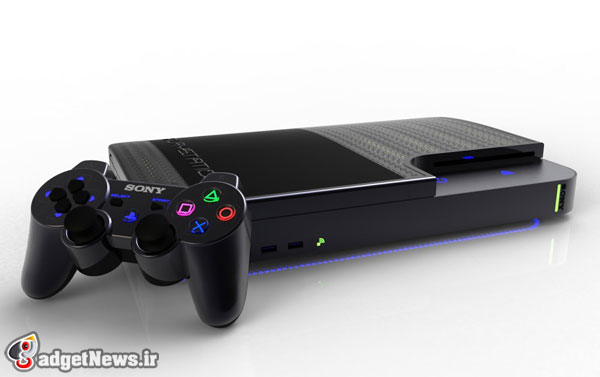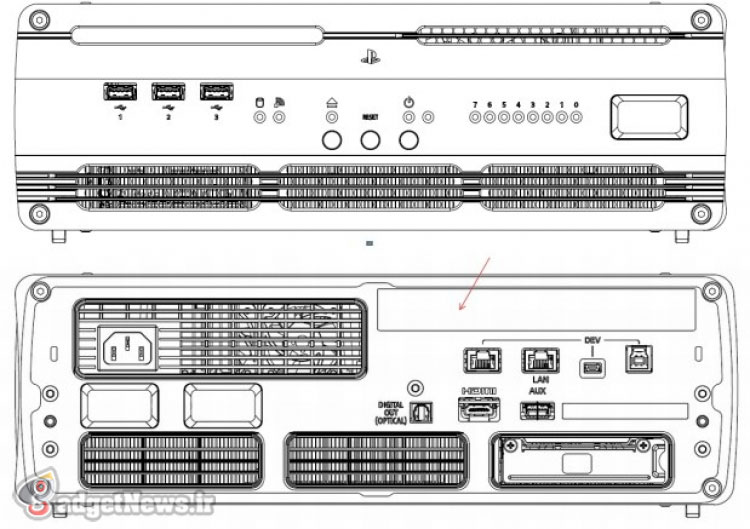
سونی برای اولین بار از سختافزار پلیاستیشن 4 در نمایشگاه E3 امسال پرده برداشت. حال به تازگی این کمپانی ژاپنی، کیت مخصوص توسعه دهندگان پلی استیشن 4 را در FCC ثبت نموده که در آن پورتهای جدیدی به کنسول اضافه گشته و فرکانس پردازنده نیز 2.75 گیگاهرتز تعیین شده است.
در اسناد تحویل داده شده به FCC، اطلاعات ارزشمندی از کنسول پلی استیشن 4 مشخص شده است. برای مثال اکنون میدانیم که این دستگاه مجهز به بلوتوث و همچنین وای-فای 802.11 b/g/n میباشد.

در این نسخه مخصوص از پلی استیشن 4، سونی سعی نموده تا دستگاه را به صورت کاملا معمولی و بدون زرق و برق در اختیار توسعه دهندگان قرار دهد. این کار به این خاطر صورت میگیرد که بتوان راحتتر با دستگاه کار کرد و همچنین دستگاه بتواند سریعتر خنک شود.
اما نکته جالب در مورد این اطلاعات این است که حداکثر فرکانس کلاک پردازنده این کنسول بازی بر روی 2.75 گیگاهرتز تنظیم شده است. با وجود آنکه هنوز به طور دقیق نمیدانیم که فرکانس کلاک این دستگاه چقدر است، اما این مقدار نیز برای یک کنسول بازی با 8 گیگابایت حافظه رم از نوع GDDR5، و قابلیت ثابت نگهداشتن درجه حرارت عمومی بین 5 تا 35 درجه سانتیگراد، بسیار مناسب است.
مشخصات فنی نسخه مخصوص توسعه دهندگان پلیاستیشن 4

منبع : engadget
Sony PS4 dev kit FCC filing shows off extra ports, 2.75GHz max clock frequency
Sony proudly showed off its PlayStation 4 hardware for the first time at E3, and now we're getting a peek at what developers are working with this generation thanks to the FCC. The DUH-D1000AA prototype Development Kit for PS4 is listed in these documents, tested for its Bluetooth and 802.11 b/g/n WiFi radios. As one would expect, the diagrams show it eschews the sleek design of the consumer model for extra cooling, a shape made for rack mounts plus extra indicator lights and ports. Also of note is a "max clock frequency" listing of 2.75GHz, and although we don't know how fast the game system will run by default, it's interesting to hear what all that silicon may be capable of (as a commenter points out below, that may relate to the system's 8GB of GDDR5 RAM) while maintaining a temperature between 5 and 35 degrees celsius. Hit the link below to check out the documents for yourself, after seeing this and the system's controller become a part of the FCC's database all we're left waiting for is Mark Cerny's baby.
 گجت نیوز آخرین اخبار تکنولوژی، علم و خودرو
گجت نیوز آخرین اخبار تکنولوژی، علم و خودرو 





